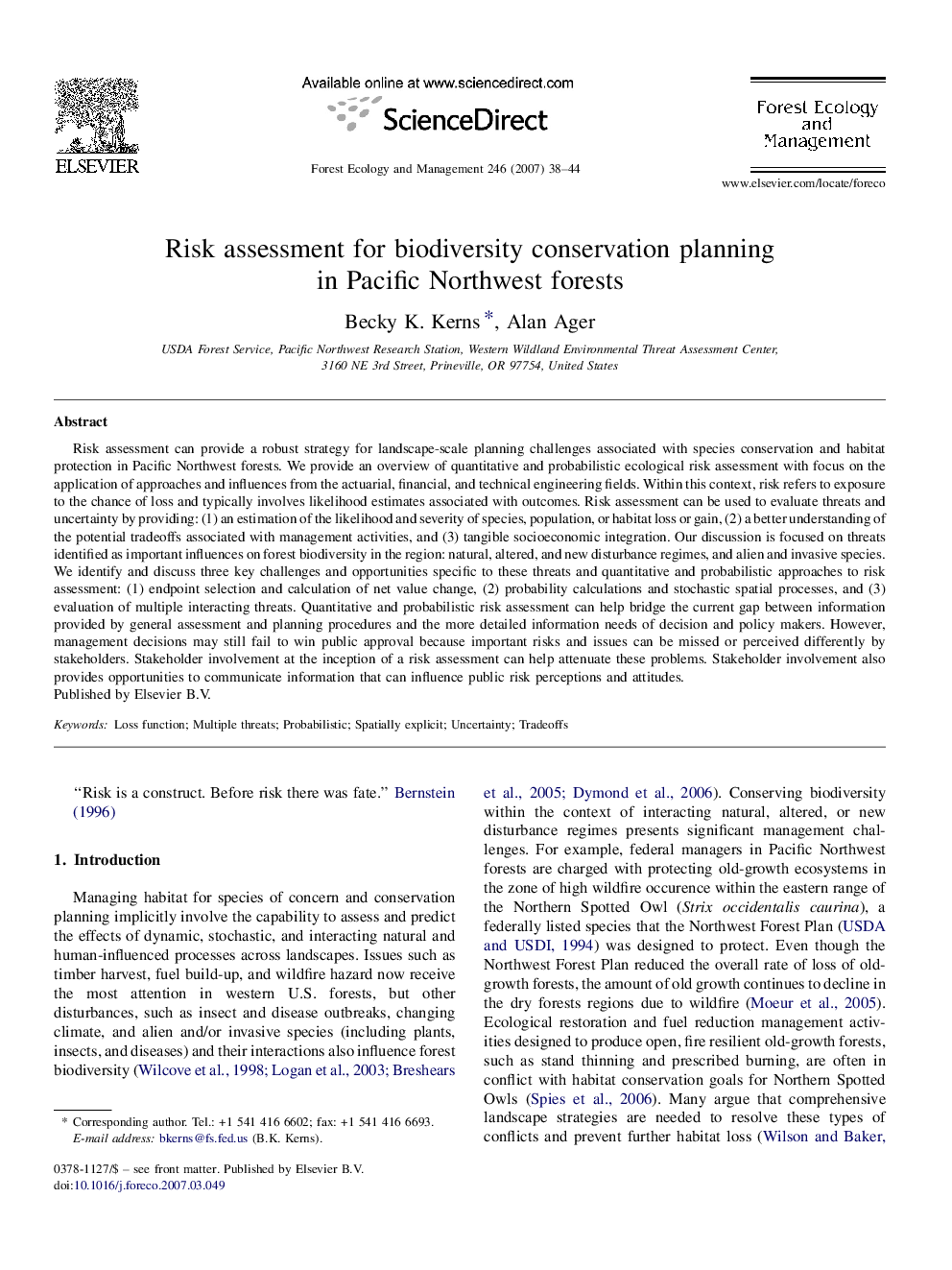| کد مقاله | کد نشریه | سال انتشار | مقاله انگلیسی | نسخه تمام متن |
|---|---|---|---|---|
| 90560 | 159388 | 2007 | 7 صفحه PDF | دانلود رایگان |

Risk assessment can provide a robust strategy for landscape-scale planning challenges associated with species conservation and habitat protection in Pacific Northwest forests. We provide an overview of quantitative and probabilistic ecological risk assessment with focus on the application of approaches and influences from the actuarial, financial, and technical engineering fields. Within this context, risk refers to exposure to the chance of loss and typically involves likelihood estimates associated with outcomes. Risk assessment can be used to evaluate threats and uncertainty by providing: (1) an estimation of the likelihood and severity of species, population, or habitat loss or gain, (2) a better understanding of the potential tradeoffs associated with management activities, and (3) tangible socioeconomic integration. Our discussion is focused on threats identified as important influences on forest biodiversity in the region: natural, altered, and new disturbance regimes, and alien and invasive species. We identify and discuss three key challenges and opportunities specific to these threats and quantitative and probabilistic approaches to risk assessment: (1) endpoint selection and calculation of net value change, (2) probability calculations and stochastic spatial processes, and (3) evaluation of multiple interacting threats. Quantitative and probabilistic risk assessment can help bridge the current gap between information provided by general assessment and planning procedures and the more detailed information needs of decision and policy makers. However, management decisions may still fail to win public approval because important risks and issues can be missed or perceived differently by stakeholders. Stakeholder involvement at the inception of a risk assessment can help attenuate these problems. Stakeholder involvement also provides opportunities to communicate information that can influence public risk perceptions and attitudes.
Journal: Forest Ecology and Management - Volume 246, Issue 1, 16 July 2007, Pages 38–44